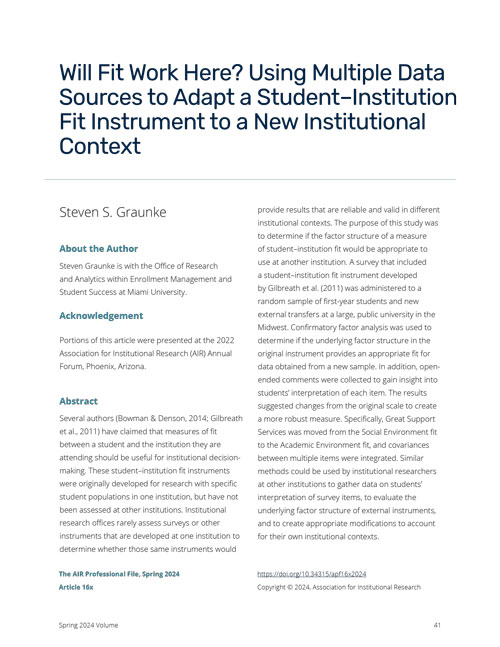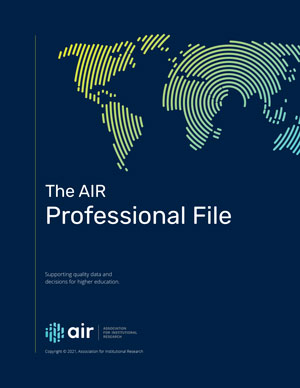The AIR Professional File
Spring 2024, Article 167
Will Fit Work Here? Using Multiple Data Sources to Adapt a Student–Institution Fit Instrument to a New Institutional Context
https://doi.org/10.34315/apf1672024Abstract
Several authors (Bowman & Denson, 2014; Gilbreath et al., 2011) have claimed that measures of fit between a student and the institution they are attending should be useful for institutional decision-making. These student–institution fit instruments were originally developed for research with specific student populations in one institution, but have not been assessed at other institutions. Institutional research offices rarely assess surveys or other instruments that are developed at one institution to determine whether those same instruments would provide results that are reliable and valid in different institutional contexts. The purpose of this study was to determine if the factor structure of a measure of student–institution fit would be appropriate to use at another institution. A survey that included a student–institution fit instrument developed by Gilbreath et al. (2011) was administered to a random sample of first-year students and new external transfers at a large, public university in the Midwest. Confirmatory factor analysis was used to determine if the underlying factor structure in the original instrument provides an appropriate fit for data obtained from a new sample. In addition, open-ended comments were collected to gain insight into students’ interpretation of each item. The results suggested changes from the original scale to create a more robust measure. Specifically, Great Support Services was moved from the Social Environment fit to the Academic Environment fit, and covariances between multiple items were integrated. Similar methods could be used by institutional researchers at other institutions to gather data on students’ interpretation of survey items, to evaluate the underlying factor structure of external instruments, and to create appropriate modifications to account for their own institutional contexts.
Author:
Steven S. Graunke
Acknowledgements
Portions of this article were presented at the 2022 Association for Institutional Research (AIR) Annual Forum, Phoenix, Arizona.
Copyright © Association for Institutional Research 2024


